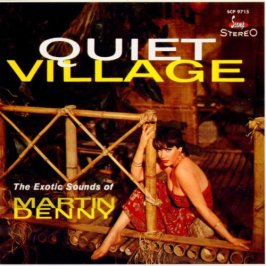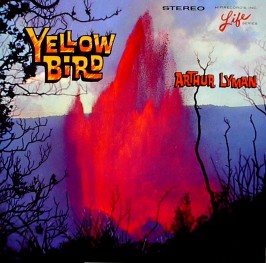Apologetics
Some of you have been following me since my beginning post on Sett.com, so you know to expect a variety of music-based topics. It seems however that my most recent post did not do much toward expanding my readership, or fulfilling the reading pleasures of my most loyal followers, and may have even left some of you confused. When I called this whole thing “mappinghappenings” you may not have realized that the happenings could be imaginary or that the travelling could just be inside my head. “But that’s the way it is”, to quote Ella Fitzgerald. And, what is the difference in talking about something totally fabricated and something that happened to me 50 years ago, where the memories inside the same old head are rattling around with those imaginary events? As a matter of fact, unless I am reporting on what is happening right this instant…no, that one is gone now…this one…oops, it’s gone, too; you see, “in the moment” cannot be written. And if I write about the future, it has not happened yet, so you are only reading my expectations or predictions for what might happen. If I write about the past, whether it is recent or long past, my past or someone else’s past; it is all coming out of my mental storage unit, called “the brain”.
Now, the past includes facts as well as interpretations of those facts. And, there are time-based facts, such as events, and there are facts that do not change with, nor are influenced by, time. For example, the formula E=mc₂ is a constant fact, but the discovery of this fact is time-based, some time shortly before Einstein published this discovery in 1905. In “fact”, this discovery actually just came to Einstein as he thought it out, inside his head.
So, what am I getting at? It is all in the mind. Memories are like photos. And we know that the photo may not be a totally accurate description of what was, because it only reflects what the lens could detect when the shot was taken. The capability of the lens is based upon both time-based and constant facts. Memories can actually be more fiction than fact; “more of gravy than of grave”, as Charles Dickens’ Scrooge once said. So, just read it “in the moment” and if it connects with you, that is great. When speaking of the past that actually happened, I will attempt to be as accurate with the facts as I can.
And here is where I want to begin. My beginning. The day I was born, the top single in the U.S. was “Till I Waltz Again with You” performed by Teresa Brewer. I do not consciously recollect ever hearing that song. I have no idea what it sounds like. But up to the age of about seven, I had collected a host of songs in my little head that I still fondly recall, although I could not tell you at what age I first heard them. Some are tied to events in my life but I cannot guarantee that it was during those events that I first heard any of these songs, or that they first registered in my memory. Most were hits at the time. But some were not, such as the recording of “’Round Midnight” by Miles Davis and Michel Legrand. I remember hearing this on the car radio when we were visiting Cucumber Falls, near Uniontown, PA, in the late 50s. I searched high and low for this song and then in 1975, a friend bought me an LP of Miles Davis’ early recordings, and I immediately recognized the song I had heard on that trip!
This recording of “’Round Midnight” needs a close listen, since the arrangement by Legrand has so much going on – all the exquisite little parts make a wonderful whole; it is a great example of how to do an orchestral arrangement. ‘Round Midnight was composed by Bernie Hanighen, Cootie Williams, and Thelonious Monk, and stands out as one of my all time favorites. This recording includes jazz greats Phil Woods on alto sax, Jerome Richardson on baritone sax, Paul Chambers on bass, Kenny Dennis on drums, Barry Galbraith on guitar, Betty Glamann on harp, Herbie Mann on flute, Bill Evans on piano, John Coltrane on tenor sax, Eddie Costa on vibes, Miles Davis on trumpet and Michel Legrand, conductor/arranger.
Exotica



Another song from around that same time period that stuck with me my entire life was Martin Denny’s version of “Quiet Village”. “Quiet Village” was written and first recorded by Les Baxter in 1952, for his album Le Sacre du Sauvage (Ritual of the Savage), but the classic version that is most remembered was recorded by Martin Denny in 1956, formerly the pianist in Les Baxter’s band. Denny first released it in 1957 on his Exotica LP, with added bird calls and frog sounds created by his percussionist, Augie Colon, and other members of the band. The song was released as a single in 1959 and became a major hit, making it to number two in the pop charts that summer. Denny actually appeared on Dick Clark’s American Bandstand in 1958. Denny recorded the song a couple more times in the 60s, one with a bossa nova rhythm and one using moog synthesizer, but it is the 1959 single that is most remembered, and is the version that was emblazoned into my memory. I never knew who did this or how to find it until I heard it on a compilation CD my parents obtained in the late 90s. I was quite excited about this discovery and had to obtain that same compilation, just for this song.
There are several stories about how it was that Denny decided to incorporate the sounds of the tropical jungle into his music. He had a regular gig at the Shell Bar in Hawaiian Village in Honolulu beginning around 1955 and also had a love for collecting ethnic and obscure musical instruments from around the world. He incorporated these instruments into his combo, which included Augie Colon on percussion and Arthur Lyman on marimba/vibraphone. While at the Shell Bar he noted that bullfrogs in the tropical bar setting would croak when he played, so he began incorporating an approximation of their sound as well as bird calls made by Colon and Lyman into his music. It went over so well that he used this idea when recording his first LP, Exotica.

Arthur Lyman decided to strike out on his own in 1957, and continued in the Denny fashion of using the sounds of tropical birds and fauna in his music. Both would remain friends while competing for the same audience. Lyman had a hit with “Yellow Bird”, whose exotica version is another song I was fascinated with as a child. Augie Colon also did a couple albums in the early 60s. Martin Denny replaced Arthur Lyman on vibes and marimba with Julius Wechter, who also later left Denny to form the Baja Marimba Band. Sandy Warner, the voluptuous model who graced the majority of Martin Denny’s album covers, tried her hand in recording an album with Steve Allen, titled Fair and Warner.

Les Baxter laid the ground work for the exotica genre beginning in 1952 but the trademark sound that is commonly associated with the genre began with Martin Denny’s first LP. Arthur Lyman took it a step further. The three would be considered the primary leaders in the exotica musical phenomenon. The heyday of exotica would be approximately from 1957 through 1963, though there are many examples from before and after that period. There were many other notable exotica artists in that time period, George Rains being one of my favorites with his LP Lotus Land, which I only discovered about five years ago. The style’s influence could even be argued as being one of the stepping stones to the psychedelic music era. Indeed, eden ahbez, with his 1959 LP Eden’s Island, is considered to be one of the earliest artists in psychedelic music, as well as an example of exotica. Both genres were based on escapism with incorporation of sounds of other cultures from across the planet. All this coincided with the increasing use of air travel both in the business world as well as in the vacationing public. Travel agencies lured customers to exotic places with pictorial brochures that I am sure were the fodder for exotica album covers.
Kim Fowley

There were songs in other genres that stuck in my mind from early childhood. One such example was the novelty song “Alley Oop” by the Hollywood Argyles from 1960. I bring this up because that song was written and recorded by Kim Fowley, with assistance from Gary Paxton who sang the ditty and some studio musicians who included Sandy Nelson on “garbage can and screams”. They named themselves the Hollywood Argyles because Argyle Street ran next to the studio. Kim Fowley died two days ago, January 15, 2015, at the age of 75, from bladder cancer. Two years ago, at the 30th anniversary of Ugly Things magazine, magazine editor and publisher Mike Stax, had invited Kim to MC the UT tribute concert at the Casbah in San Diego, but he could not make it due to ill health. I was at that concert weekend and came that close to actually meeting Kim. I have two of his albums, Outrageous from 1968, and Living in the Streets from 1978. I have both in LP and CD formats. Kim was a great behind the scenes catalyst in Southern California rock, and if there was true justice in rock music would have already been in the Rock ‘n’ Roll Hall of Fame.
And with that, I close. R.I.P., Kim.

